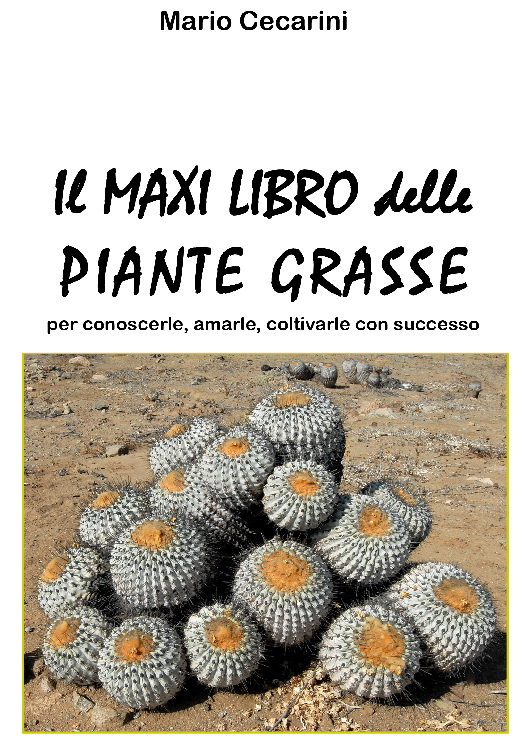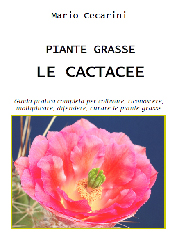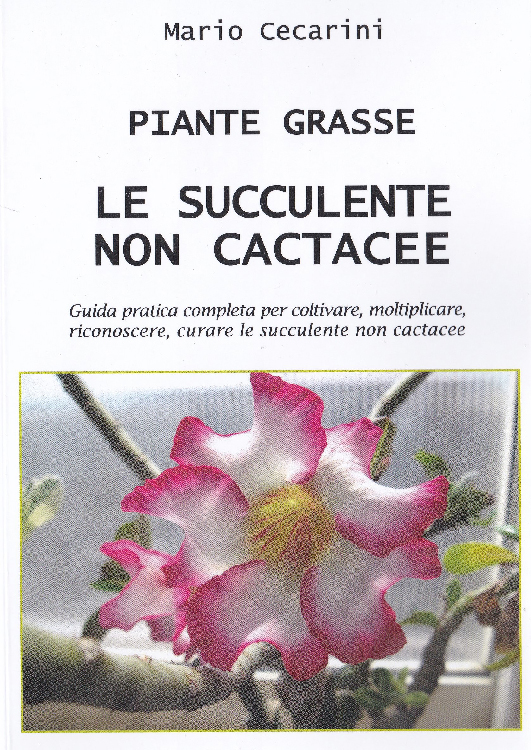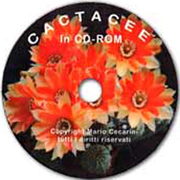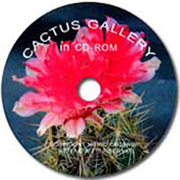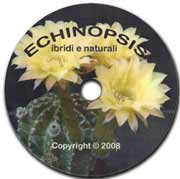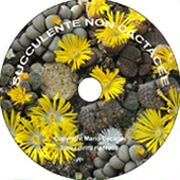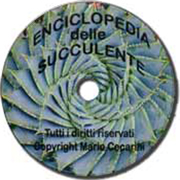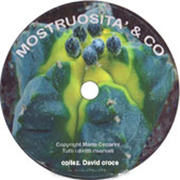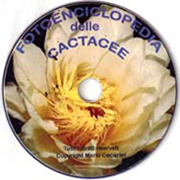|
Growth factors
 The elements that determine plant development (heat, water, light, nourishment) are strictly interdependent: if one of them increases, also the others must increase, and vice versa, of course within determined limits. For instance, if a plant is watered too much, the light, the temperature and the nourishment must be also increased. But since every plant has a characteristic equilibrium, which for each factor varies among a minimum limit, a maximum limit and an optimal condition, the more are the factors at their optimal level, the less are influent those that don't reach it. Nevertheless, if some factors are below the minimum level, the whole vegetative activity stops, because the plant can’t make use of any other available elements (Giusto Liebig’s minimum law). It’s necessary to point out that for a lot of plants these factors have a large variability range, so they result enduring (so-called easy plants), while others are not at all (difficult plants). So it’s very important to know the climatic conditions of the plants’ native habitat, even if it’s not necessary to recreate these conditions, which would be almost impossible. The elements that determine plant development (heat, water, light, nourishment) are strictly interdependent: if one of them increases, also the others must increase, and vice versa, of course within determined limits. For instance, if a plant is watered too much, the light, the temperature and the nourishment must be also increased. But since every plant has a characteristic equilibrium, which for each factor varies among a minimum limit, a maximum limit and an optimal condition, the more are the factors at their optimal level, the less are influent those that don't reach it. Nevertheless, if some factors are below the minimum level, the whole vegetative activity stops, because the plant can’t make use of any other available elements (Giusto Liebig’s minimum law). It’s necessary to point out that for a lot of plants these factors have a large variability range, so they result enduring (so-called easy plants), while others are not at all (difficult plants). So it’s very important to know the climatic conditions of the plants’ native habitat, even if it’s not necessary to recreate these conditions, which would be almost impossible.
Heat: is the factor which determines the growth, since it conditions the vital functions, regulating their intensity. In cultivation, in winter especially, the plants are kept at slightly higher temperatures that in native habitat, because of the difficulty in getting very low humidity values. Cultivation guides determine the minimum temperature values so that the more cold sensitive species don't suffer. The ideal temperature is 25-35°C (73-77F°) in summer; temperature values near 40°C (104F°) are tolerated, well knowing, yet, that above 50°C (122F°) the vegetable cells begin to die if the heat is not associated with good ventilation. Rest, at low temperature and humidity (except for some sporadic cases), with little or no watering, is essential for cactaceae flowering.
Water: is the circulating solution, integral part of the living matter and source of equilibrium in presence of micro-organisms, essential element for the vegetable nutrition, since it allows the mineral salts absorption. It’s absorbed by plants from the ground and, to a smaller extent, from air.
There are more plants dying from excessive water than from lacking of water; and it’s easier to recover a plant in the second case, rather than in the first one. The prolonged water excess makes the empty spaces among the earth particles occupied, causing roots asphyxia and stem rotting.
If you learn to observe plants, these show you when it’s time to water them, after the rest period, presenting their apical zone deeper green coloured. To prevent calcium accumulation in the ground, it should be always used rainwater collected, for instance, from the roof and preserved in a dark place, to avoid algae growth. Watering must be performed with a good soil soaking in the evening, during summer, and in the first morning at the beginning of season and in autumn.
Light: is the essential element for chlorophyll function, i.e. the formation of organic substances from carbon dioxide and water, using light energy. In other words it is the process in which plants store sunlight energy which will be released at the proper time to activate numerous and complex chemical reactions.
But not all the succulents need light in the same measure, some species like to stay in the bright sunlight for the whole day, others prefer sunlight shielded by mats or nets, imitating what grass and bushes do in habitat; finally, others like the shade and the high humidity, as Epiphyte, native to the forests. But also sunlight loving plants can be burnt if they don’t get accustomed gradually, as our skin at the seaside or in the mountains, during summer.
Nourishment: all the living beings need it; the plant draws mineral salts dissolved in water from the ground and carbon dioxide from air. Ventilation is of prime importance in the making of living substance and in the inside temperature regulation. But draughts must be avoided. Fertilizers must be used diluted to half the strength recommended on the label and, however, their contents must have an elements ratio not much different from one part of Nitrogen, two parts of Phosphorus, four parts of Potassium, diluted to one-thousand strength.
Liebig’s law is valid not only for the growth factors, but also for nourishing elements, so if a fertilizing element is low, the whole vegetable production suffers from it. Plants, without any exception, must not be fertilized during the vegetative rest, nor after a transplanting.
For further information consult the page Cultivation guide
Pests and diseases: can be the cause of a growth stop at first and can, subsequently, bring plants to death, so it’s necessary a careful check to avoid them.The most common pests are the mealy bugs (“mealies”) which attack the stem and the roots (“root mealies”). A way to control widespread mealy bug attacks is sprinkling and soaking with a 2 part per thousand solution of specific insecticides (based on diazinon, for example). Other dangerous pests are red spider mites which can be killed by systemic insecticides, miticide, and by misting the plants.
Among cryptogamic diseases, the most serious damages are caused by the rottenness and by the mould, in presence of soil with too much organic substance and excess of humidity. If the attack originates from the roots, generally there is no remedy, because the illness will be already spreaded to the stem; instead, if it is at neck level, it is possible to try to remove the sick part, disinfect it with copper sulphate, wait for cicatrization, and finally it can be treated as a cutting. The prevention, carried out with systemic fungicides, is fundamental.
Against animal and vegetable pests, should be enough performing two liquid applications with the products described above, at the beginning and at the end of the growth season. Personally, I think it’s good also to perform a treatment, in the first December, mixing a fungicide and a parasiticide broad spectrum dust.
For further information consult pages Pests and diseases.
It’s better to keep separate summer growing plants from winter growing plants (some not acclimatized southern hemisphere species).
 Flowering Flowering
Is the inimitable tool that Nature has produced to perpetuate the species, and that so much joy and satisfaction can give to whom, like us, cultivate succulents for passion.
The flower is essentially constituted by:
- the calyx, above the stem; it protects, from the outside, the delicate flower organs. It is composed of sepals, which are called tepals if they have a colour different from green;
- the corolla, that is composed of petals often showy to attract insects;
- the androecium, male organ with stamens; it is composed of the filament and the anther which contains pollen grains;
- gynoecium, the female organ; it is composed of the ovary which contains ovules; upward the ovary ends with the pistil, constituted by the style and the stigma.
Flowering is also sign of the maturity of the plant and it is reached at very different ages from a species to another on the base of the information that the plant receives from its genetic patrimony. So we have Rebutia that blooms after few months from the seeding, but it has a brief life, while for the Carnegiea it is necessary to wait 40-50 years, but it has a life of over one century. Melocactuses bloom in correspondence of the cephalium appearance that also puts an end to the growth, while some species must reach a determined height. For the Agave, Aeonium tabulaeforme, Sempervivum the flowering marks the near plant death (monocarpic species). In cultivation a genetically mature plant could also not to bloom for a whole series of negative factors as the lack of balance in growth factors or for some illnesses. To bloom, a lot of species must have observed a determined day length and must have been subjected, for a given period, to low temperatures, followed by higher temperatures (thermal shock). This technique is often used by gardeners to force ornamental plants. Various studies and experiments make to think that an increase of auxin conducts to an increase of the female flowers in the monoecious plants, contrarily to what happens with gibberellin. Some hormonal treatments have also allowed the sex inversion in the dioecious plants. Most plants ensure cross pollination (heterogamy) facilitating it with opportune mechanisms like: bringing stamens and pistils to maturation in different times, or positioning them so that the pollen cannot come into contact with the stigma.
Discovered the secret of the flowers!
How is transmitted the information that tells all the flowers of a certain variety that it is time to bloom, so that they can pollinate each other allowing the species to perpetuate? This is the question that all the botanists asked for about seventy years. Some has spoken of not well defined "messengers", some of a hormone (perhaps a gibberellin) some, more recently, of equilibrium between nitrogenous substances and carbohydrates. All these theories have never found a scientific confirmation. Recently a team of Japanese, Swedish, German and American scientists have given a sure answer to the question, using the molecular biology, which enabled the reading of the genes.
The "sensors" present in the plant are able to recognize the temperature and the duration of the day or of the night, so that when conditions are proper, a gene produces a protein called Ft (flowering locus T); this protein is carried through the lymphatic vases (phloem), up to the bud top, where another gene recognizes the protein and starts the flowering mechanism. This is a great discovery, which can also bring remarkable advantages in repopulation. Gardeners use to induce some plants to bloom through the "forcing" technique, that consists in artificially altering illumination and temperature in the greenhouse, but in an empirical way and without knowing "why" and "how" the phenomenon happens.
 The pollination The pollination
When a grain of mature pollen is deposited on the mature stigma of a flower of the same species, it germinates, swells, and creates the pollen tube; this grows inside the style crossing it up to the ovary locule, going toward an ovule to which it sticks, penetrating in the micropyle. In the meantime the generative nucleus of the pollen forms two spermatic cells that are placed at the end of the pollen tube; one of these penetrates the embryonic sack and it connects with the egg cell; the two nuclei merge: this is the fecundation that immediately starts the embryo formation.
The other spermatic nucleus enters the primary endosperm, it merges with the two polar nuclei and forms a reserve of nutritive tissue inside the seed, constituted by one or two embryonic leaves called cotyledon.The ovary increases its dimension coming to form the fruit, while the ovules will become seeds.
 The artificial fecundation. Men use this knowledge to artificially intervene to get more beautiful, more resistant and more productive breeds.The flower from which it’s wanted to get the fruit is chosen; with special tweezers the immature stamens are removed (castration), to avoid self-fecundation; the flower is protected by a gauze bag; when the stigma appears completely open, shiny and viscous, which are maturity signs, it is fecundated with mature pollen (not agglutinated) from the chosen flower; the bag is inserted again; a label with the date and the name of the mother and the father plants is applied to the flower. This first generation is called F1, and usually it is not remarkable, so often other crossbreeding follow. The artificial fecundation. Men use this knowledge to artificially intervene to get more beautiful, more resistant and more productive breeds.The flower from which it’s wanted to get the fruit is chosen; with special tweezers the immature stamens are removed (castration), to avoid self-fecundation; the flower is protected by a gauze bag; when the stigma appears completely open, shiny and viscous, which are maturity signs, it is fecundated with mature pollen (not agglutinated) from the chosen flower; the bag is inserted again; a label with the date and the name of the mother and the father plants is applied to the flower. This first generation is called F1, and usually it is not remarkable, so often other crossbreeding follow.
In Nature succulents pollination is performed by "pollinators" constituted by bugs, birds, bats which often are not present in cultivation; nevertheless, by the wind, some hybrids can be produced through unwanted crossbreed between different species and different kinds, that would never happen in the origin places, because of the distance. Who wants to maintain race purity can protect flowers with a tight weave gauze or can cap with it the whole plant, if its dimensions allow it. For info to see FAQ #1
The fruits
Origin from the ovary transformation, they have the pericarp outside and, inside, the seeds constituted by fertilized ovules. They can assume different forms, according to the family or to the species. So we can have the berry, the achene, the follicle, the capsule, the drupe, confining to the most common forms in succulents.
The berry, typical of the cactaceae and of a lot of others succulents, can be pulpy or dry, dehiscent or indehiscent. Generally it has a fleshy pericarp and a membranous epicarp.
The achene, typical of Compositae and of Moraceae, is a dry fruit, indehiscent with coriaceous pericarp which wraps the seed without sticking to it.
The follicle, typical of the Crassulaceae, Apocynaceae, Asclepiadaceae is a fruit constituted by a single carpel able to open in longitudinal sense and to free the seeds endowed with "pappus", transportable by the wind.
The capsule, characteristic dry dehiscent fruit, can assume different forms and behaviours: with three lobes as it happens in the Euphorbiaceae; able to open with the rain and to close with the dry as it happens in the Mesembryanthemaceae; with some locules as in the case of a lot of Aloaceaes.
The drupe is a fruit with pericarp pulpy outside and woody inside; it is typical of a lot of succulents belonging to the families of the Anacardiaceae, a lot of Arialiaceae, Apocynaceae and Burseraceae.
The seed and its germination
The seed is composed of a wrap inside which there is the embryo that is a sketch of the future plant. Once mature it enters a phase of rest (latency) up to when it will find proper conditions of temperature, humidity, illumination, oxygenation. A well conformed embryo, with enough reserve substances, will bud giving life to a new plant. The reserve substances result so much optimal as best are vegetative conditions in which the mother plant is during the reproduction. Another fundamental element is the morphological and physiological maturity of the seed that usually is reached with fruit maturation, which, in some cases, coincides with the dehiscence (opening).
The phase of latent life, according to the species, can last some months, years and even a few centuries; after that, the embryo dies. The reason of this is in the composition of the reserve substances, and therefore in the faster or slower oxidation of the fat substances. This process can be slowed down preserving the seeds in a dry environment and at low temperatures.
Some seeds must wait for the disappearance of some inhibiting chemical substances to bud; among the necessary external factors, already mentioned, we remember water, which starts the whole process and is also needful to break the teguments of the hard and impermeable seeds. The seed, during swelling, needs oxygen so that the metabolic process can begin. Also the temperature has an important role (it is enough to think about vernalization), necessary for the seeds of the so-called cold plants. For many seeds also the light has an important role even if an illumination of few luxes and for short times is enough. The seeds that need light to germinate are called photoblastic and they constitute around the 70% of the species; those that escape it, on the contrary, are called aphotoblastic.
The possibility that the plants have to colonize a determined region depends on the dispersion both of the fruit and of the seed, performed by the wind and the birds.
The dormancy, besides in the seed, is also manifested in other vegetative organs, typically in that territories where exists a seasonal nature, where are periodically present conditions adverse to the metabolism. The causes must be found in cold and in lack of rain, for which the apical buds become impermeable and the plants minimise transpiration becoming the more resistant to cold the smaller is the water content in tissues. When conditions are favourable, the seed absorbs water, it swells, it breaks the tegument, the radical meristem is activated, the radicle comes out and it penetrates in the ground because of the positive geotropism; shortly after the apical meristem of the young stem does the same: the plumule comes out from it, because of the negative geotropism, and it directs upward searching the light. Root-hairs are soon formed and the seedling starts to absorb through them. The seedling doesn't have true green leaves yet which could produce organic matter, so its nutrition is provided by the substances accumulated in the seed. A normal apex is formed only in presence of a suitable illumination. With scarce light the seedling has difficulty in stretching, and the extension of the young stem is abnormal. With the start of the photosynthetic process the young seedling becomes autonomous and grows according to the information contained in its genetic patrimony.
Control of the life cycle
The life cycle of a plant is the consequence of complex interrelations between the genetic information and the environment. At each stadium of plant development, there will be one or more hormones able to regulate its activity.
Abscisic acid (ABA) is an inhibitor able to activate itself in concentrations of one part on 5 million; it supervises the dormancy of the seeds and the buds, as it happens to the seeds of desert or to those of the cold regions, that only a strong rain or strong frosts, can remove respectively. The winter sleeping buds of a lot of plants contain high levels of this substance, which decreases with the springy awakening; but, perhaps, the principal function is helping plants to store the water in aridity periods and making them more resistant to freeze. Also the action of leaves and the fruits falling is associated to it.
Gibberellins are hormones present in the apical and subapical meristems of young stems and leaves; they stimulate embryo germination, are able to make the dwarf plants grow in an impressive way and to promote their flowering; their carriage is operated by the vascular bundles without a remarkable accumulation which could produce damages. About sixty gibberellins (identified with the letters GA followed by a number) are known; but just some of them are present in each individual. They are very similar but plants are able to distinguish them and to react in an abnormal way to some and to be insensitive to others.
Auxins, said vegetable growth hormones, react in different ways according to their concentration and to the organ to which are applied; it seems they can make the radicle to direct downward and the young stem to direct toward the light, in opposite directions, because of that they also have a control on the phototropism. It supervises the apical dominance, so an apical bud in growth phase suppresses the development of lateral buds in the same stem; they promote the ramification and the initiation of root growth, as happens in cuttings: stem cells contain all the necessary information to form the lacking parts of the plant. They stimulate the production of ethylene for the growth of new adventitious roots and for the inhibition (or promotion) of leaves and fruits abscission (fall).
Ethylene is the only gaseous phytohormone; at the concentration of one part on 6.000.000, it provokes seedling deformation, it stimulates leaf abscission, it interrupts dormancy of seeds and apical buds, it accelerates fruits, flowers and leaves ripening.
Cytokinin is a chemical substance which regulates the cell division; it can delay the process of organs aging, intervening on trophism; it is present in the roots, in the seeds and in the fruits.
It is thought that Auxin and Cytokinin stimulate lateral buds growth (branching) in consequence of the apical bud topping (apical dormancy). Auxin and Cytokinin interaction coordinates the balanced development of the aerial and underground parts. Auxin and Gibberellin control the process of differentiation between the carrying of sap (phloem vascular tissue) and the carrying of water and mineral salts (xylem vascular tissue).
A pollinated and fecundated flower is able to produce a fruit, only if Auxin and Gibberellin stimulate ovary cells to multiply and to grow. In autumn the fruits and the leaves, under the action of hormones among which Auxin (IAA), maybe Cytokinin, and Abscisic acid, undergo a process of senescence that ends with the formation of an abscission layer at the stalk base; enzymes action destroys this layer and allows fruits and leaves to fall. The plant slows down its metabolism, the new buds enter dormancy; all is ready to face winter, waiting for the awakening that will come when the temperature will raise and the days will draw out.
The plant recognizes the season on the basis of an element that it considers stable: the length of the night. So long-day plants bloom when the day reaches one determined length; short-day plants bloom when it goes down under a determinate value, considered critical; day-neutral plants, instead, bloom accordingly to their reached maturity, independently on the hours of light. So that this mechanism works it is necessary that the plants can measure passing time, and they do it with a kind of internal biological clock, also without any signals given by the environment (circadian rhythms); the light is measured by a pigment-hormone called phytochrome, which is of blue colour and which can induce seeds germination, etiolation, chlorophyll synthesis and buds dormancy; it is present on the leaves and in the seeds and in smaller measure in all the other vegetable parts. The circadian rhythms are fed by the respiratory process and they are also observable in Succulents, as in the flowers opening and closing of Kalanchoe blossfeldiana and in the carbonic dioxide emission of Bryophyllum fedtschenkoi.
Daily cycle. To survive in hostile environments succulents has contrived metabolic processes different from those of all the other plants.
Cycle C.A.M. (Crassulacean Acid Metabolism). During the night, succulents, with open stoma, uptake endogenous carbon dioxide and store it as malic acid through a particular enzyme (PEPC). During the day, carbon dioxide is released by the malic acid and the stoma are closed to avoid water loss caused by heat; anyway, the light can activate photosynthesis and the connected sugar production, with formation of oxygen and consumption of carbon dioxide. Carbon dioxide used by CAM plants for the photosynthesis is both atmospheric and internal, coming from the respiration. This cycle is typical of Agavaceae, Aizoaceae, Asclepiadaceae, Asteraceae, Bromeliaceae, a lot of Cactaceae, Crassulaceae, Cucurbitaceae, Didieraceae, Euphorbiaceae, Geraniaceae, Labiatae, Liliaceae, Oxalidaceae, Orchidaceae, Piperaceae, Portulacaceae, Vitaceae.
C3 cycle. Also said Calvin cycle is constituted by a continuous series of reactions that convert the carbon dioxide into carbohydrates by fixation, during the dark phase of the photosynthesis. The first product of carbon dioxide fixation is a molecule with 3 carbon atoms, so plants that use it are said C3. This process causes a carbon dioxide loss with a damage in growth as greater as brighter is the light intensity.
C4 cycle. Some tropical plants have developed another effective way to capture carbon dioxide through its pre-fixation, followed by a transfer to Calvin cycle (C3). These plants fix the carbon dioxide forming malic acid through an enzyme which doesn't bind oxygen and from whose reaction is obtained a compound with 4 carbon atoms (C4).
Plant growth. In the Angiosperms we distinguish root and aerial part. The first fixes the plant to the ground, it absorbs water and mineral salts, it stores excess sugar, it distributes water, salts, sugar and hormones to the whole plant. The aerial part attends to the photosynthesis, materials transport, the reproduction, the hormones synthesis. Plants grow for the whole life, nevertheless height growth occurs in the tall part, while the developed parts don't grow in this sense. It is the primary growth realized by meristematic cell division, where a cell remains as it is, while the other forms the permanent parts of the plant. Secondary growth takes place by division of lateral meristem cells which attend the development in width.
Plant death. Some plants live for a season, others for millennia, but the natural death is an ineluctable destiny in multicellular plants because of the differentiation of the somatic cells which perform determined functions and of the following degenerative process. Cells senescence is determined by toxins accumulation which conducts to the subcellular damage of the organelles, which die, also causing the subject death. In each stadium of vegetable life exist old cells, new cells, more or less diversified cells, and dead cells.
Death cause in the annual plants must be searched in the lack of lasting organs capable to withstand the winter stasis. Some grassy plants, with underground reserve organs, are able to survive even if the aerial part dies. A lot of plants, which in their natural habitat are considered perennial, behave as annual if cultivated in other environments.
Adaptation to the environment
Plants grow in every part of the world, showing to be able to tolerate a large range of climatic conditions. Nevertheless plants with a determined habitat are certainly not able to survive in a completely different environment, because each individual has developed certain characteristics that make it proper for its local climatic conditions. To reach these results the plants had to modify both the physical structure and the physiological and biochemical mechanisms.
When plants left waters where they lived, to colonize the dry land, they had to face and to solve a lot of problems: developing a support structure; preventing the excessive water loss allowing, at the same time, gaseous interchanges; protecting the delicate reproductive organs; improving the mechanisms of adaptation to variable climatic conditions, in relationship with seasonal nature; inventing a system for carrying nourishing mineral substances through the various parts of the organism; assuring the reproduction in the most proper period; giving to seedlings protection and nourishment. This has involved big changes to metabolism and has made necessary the acquisition of sensory structures and the creation of a precise internal biological clock. Besides the time the plants are able to measure gravity, temperature, light, they feed, they breathe, they fight infections and in some cases they form symbiosis with mushrooms and bacteria. They can also be regenerated in various ways using single cells, indicating that each of them contains the genetic information to reconstitute whatever part of the plant. The vegetable cell represents the "brick" with which are built all the organs that allow the development of a new individual, by cellular differentiation and cellular division.Plants live in competition both with the environment and with the other vegetables for conquest of light, of space and of nourishing substances, necessary elements to their survival.
Alliance among plants, bugs and birds. The most known mutual symbiosis is that among pollinator bugs and entomophilous plants. Insects activity is fundamental for seeds production of many vegetables; in exchange the vegetables furnish pollen and nectar. The same do hummingbirds (Ornithogamy) and bats (Chiropterogamy), for example towards saguaro, whose flower, opening during the night and for a few hours, could not be fertilized otherwise.
Another symbiosis is that between ants and Myrmecodie (Rubiaceae), where the ants find shelter and nourishment in caudex cavities, protecting in exchange the plant from the attacks of harmful phytophagous species. A particular type of symbiosis is also that offered by the galls, that is from an abnormal development of cells or tissues caused by a parasite that could be a nematode (roots), a bacterium, a mushroom, a mite or an insect. The gall can develop not only on the roots but also on buds, leaves, inflorescences, fruits. The relationships between insects secretion and plant tissues have not been clarified yet, what is certain is that the secretion is injected by females together with the egg or from the same larva through the salivary glands.
|








 The elements that determine plant development (heat, water, light, nourishment) are strictly interdependent: if one of them increases, also the others must increase, and vice versa, of course within determined limits. For instance, if a plant is watered too much, the light, the temperature and the nourishment must be also increased. But since every plant has a characteristic equilibrium, which for each factor varies among a minimum limit, a maximum limit and an optimal condition, the more are the factors at their optimal level, the less are influent those that don't reach it. Nevertheless, if some factors are below the minimum level, the whole vegetative activity stops, because the plant can’t make use of any other available elements (Giusto Liebig’s minimum law). It’s necessary to point out that for a lot of plants these factors have a large variability range, so they result enduring (so-called easy plants), while others are not at all (difficult plants). So it’s very important to know the climatic conditions of the plants’ native habitat, even if it’s not necessary to recreate these conditions, which would be almost impossible.
The elements that determine plant development (heat, water, light, nourishment) are strictly interdependent: if one of them increases, also the others must increase, and vice versa, of course within determined limits. For instance, if a plant is watered too much, the light, the temperature and the nourishment must be also increased. But since every plant has a characteristic equilibrium, which for each factor varies among a minimum limit, a maximum limit and an optimal condition, the more are the factors at their optimal level, the less are influent those that don't reach it. Nevertheless, if some factors are below the minimum level, the whole vegetative activity stops, because the plant can’t make use of any other available elements (Giusto Liebig’s minimum law). It’s necessary to point out that for a lot of plants these factors have a large variability range, so they result enduring (so-called easy plants), while others are not at all (difficult plants). So it’s very important to know the climatic conditions of the plants’ native habitat, even if it’s not necessary to recreate these conditions, which would be almost impossible. Flowering
Flowering The pollination
The pollination  The artificial fecundation. Men use this knowledge to artificially intervene to get more beautiful, more resistant and more productive breeds.The flower from which it’s wanted to get the fruit is chosen; with special tweezers the immature stamens are removed (castration), to avoid self-fecundation; the flower is protected by a gauze bag; when the stigma appears completely open, shiny and viscous, which are maturity signs, it is fecundated with mature pollen (not agglutinated) from the chosen flower; the bag is inserted again; a label with the date and the name of the mother and the father plants is applied to the flower. This first generation is called F1, and usually it is not remarkable, so often other crossbreeding follow.
The artificial fecundation. Men use this knowledge to artificially intervene to get more beautiful, more resistant and more productive breeds.The flower from which it’s wanted to get the fruit is chosen; with special tweezers the immature stamens are removed (castration), to avoid self-fecundation; the flower is protected by a gauze bag; when the stigma appears completely open, shiny and viscous, which are maturity signs, it is fecundated with mature pollen (not agglutinated) from the chosen flower; the bag is inserted again; a label with the date and the name of the mother and the father plants is applied to the flower. This first generation is called F1, and usually it is not remarkable, so often other crossbreeding follow.